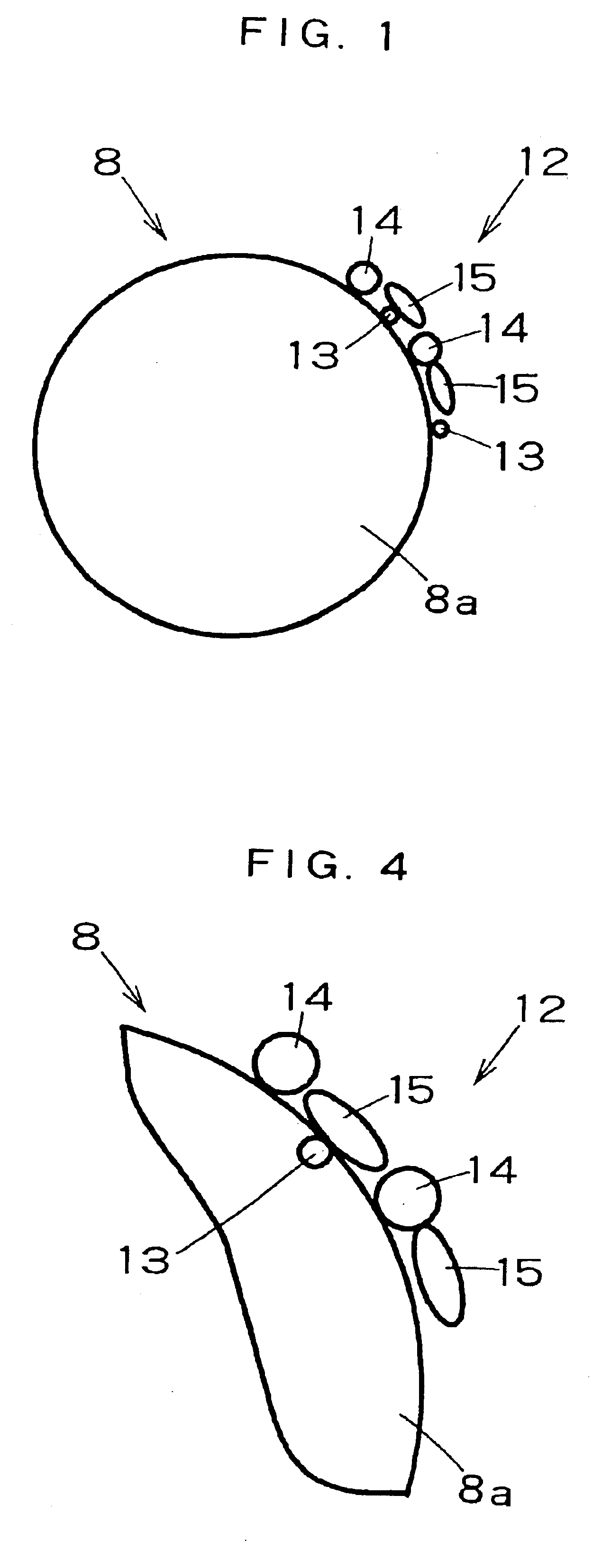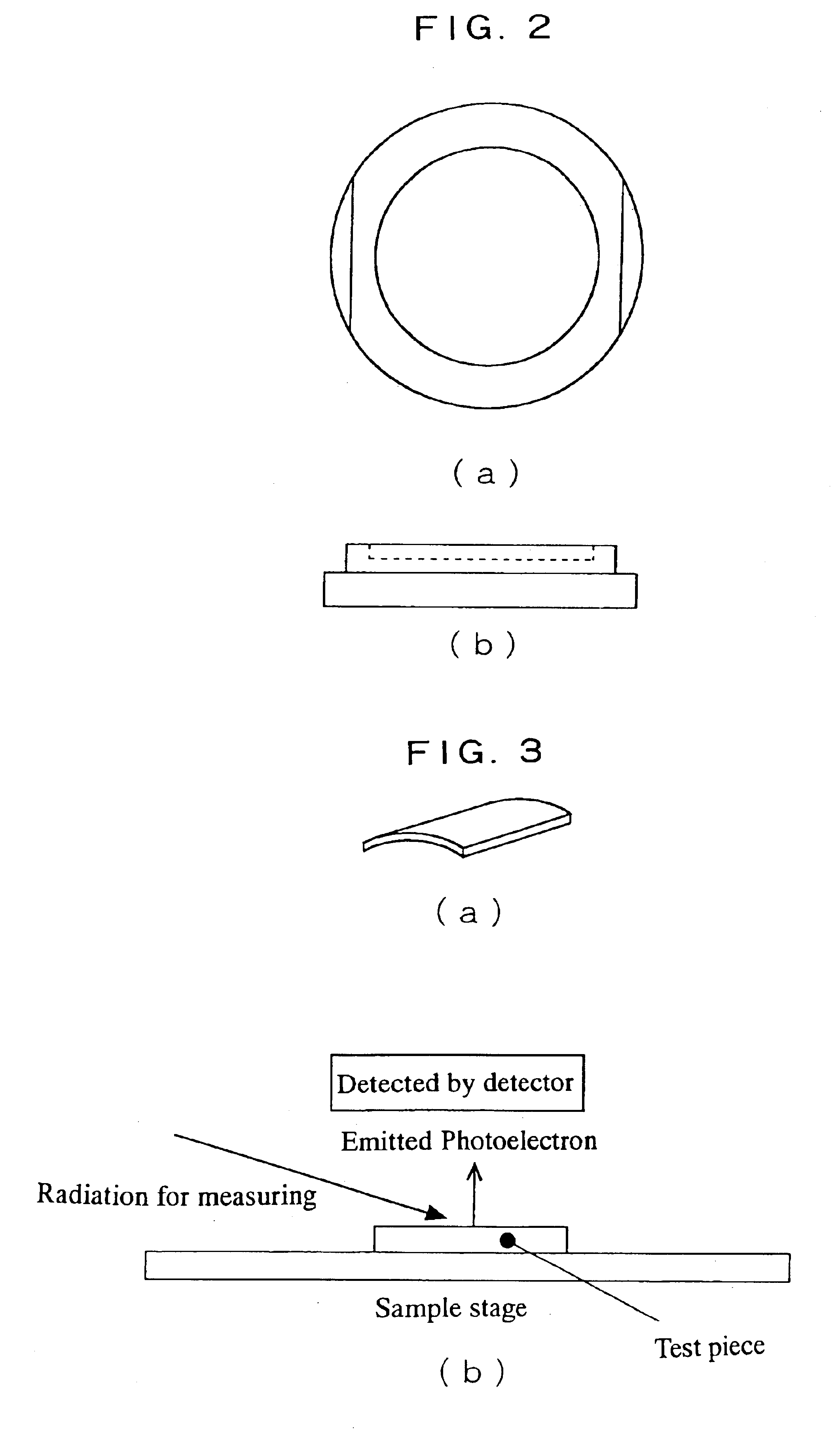Non-magnetic single-component toner, method of preparing the same, and image forming apparatus using the same
a toner and non-magnetic technology, applied in the field of non-magnetic single-component toner, can solve the problems of increasing increasing the charge of toner particles, and not getting clear color images, so as to improve the transfer efficiency, reduce the amount of fog toner, and make the charging property further stabl
- Summary
- Abstract
- Description
- Claims
- Application Information
AI Technical Summary
Benefits of technology
Problems solved by technology
Method used
Image
Examples
first embodiment
FIG. 1 is an illustration schematically showing non-magnetic single-component toner according to the present invention.
As shown in FIG. 1, a non-magnetic single-component toner of the first embodiment is a negatively chargeable toner comprising toner mother particles 8a and external additives 12 externally adhering to the toner mother particles 8a. As the external additives 12, small-particle and large-particle hydrophobic silicas (SiO2) 13, 14, i.e. hydrophobic silica (SiO2) 13 of which mean primary particle diameter is small and hydrophobic silica (SiO2) 14 of which mean primary particle diameter is large, and hydrophobic rutile / anatase type titanium oxide (TiO2) 15 are used.
The mean primary particle diameter of the small-particle hydrophobic silica 13 is set to 20 nm or less, preferably in a range from 7 to 12 nm (this is equal to “from 7 nm to 12 nm”. The same notation is used for other units.) and the mean primary particle diameter of large-particle hydrophobic silica 14 is set...
second embodiment
FIG. 9 is an illustration schematically showing non-magnetic single-component toner according to the present invention.
As shown in FIG. 9, a negatively chargeable toner 8 as a non-magnetic single-component toner of the second embodiment also comprises toner mother particles 8a and external additives 12 externally adhering to the toner mother particles 8a similarly to the toner shown in FIG. 1. As the external additives 12, a hydrophobic silica (SiO2) 13 having a small mean primary particle diameter, a hydrophobic silica (SiO2) 14 having a large mean primary particle diameter, and hydrophobic rutile / anatase type titanium oxide (TiO2) 15 are used similarly to the aforementioned first embodiment. In addition, hydrophobic positively chargeable silica (SiO2) 16 of which diameter is equal or similar to that of the large-particle negatively chargeable silica 14 is also used in the negatively chargeable toner 8 of the second embodiment.
The mean primary particle diameter of the small-particl...
third embodiment
Now, non-magnetic single-component toner of the present invention will be described.
A non-magnetic single-component toner 8 of the third embodiment also comprises toner mother particles 8a and external additives 12 externally adhering to the toner mother particles 8a as shown in FIG. 1. As the external additives 12, a hydrophobic silica (SiO2) 13 having a small mean primary particle diameter, a hydrophobic silica (SiO2) 14 having a large mean primary particle diameter, and hydrophobic rutile / anatase type titanium oxide (TiO2) 15 are used.
Similarly to the aforementioned first and second embodiments, the mean primary particle diameter of the small-particle hydrophobic negatively chargeable silica 13 is set to 20 nm or less, preferably in a range from 7 to 16 nm and the mean primary particle diameter of large-particle hydrophobic negatively chargeable silica 14 is set to 30 nm or more, preferably in a range from 40 to 50 nm. The rutile / anatase type titanium oxide 15 consists of rutile ...
PUM
| Property | Measurement | Unit |
|---|---|---|
| Percent by mass | aaaaa | aaaaa |
| Percent by mass | aaaaa | aaaaa |
| Length | aaaaa | aaaaa |
Abstract
Description
Claims
Application Information
 Login to View More
Login to View More - R&D
- Intellectual Property
- Life Sciences
- Materials
- Tech Scout
- Unparalleled Data Quality
- Higher Quality Content
- 60% Fewer Hallucinations
Browse by: Latest US Patents, China's latest patents, Technical Efficacy Thesaurus, Application Domain, Technology Topic, Popular Technical Reports.
© 2025 PatSnap. All rights reserved.Legal|Privacy policy|Modern Slavery Act Transparency Statement|Sitemap|About US| Contact US: help@patsnap.com



